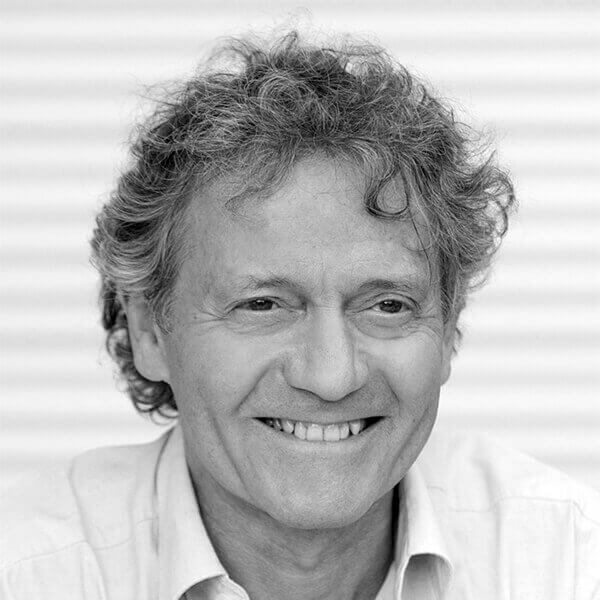Prior to the 3D Printshow in Berlin All3DP.com talked to some of the guest speakers in order to get insights into the 3D design and print industry of today and tomorrow.
Today’s interview guest was Dr. Gabor Forgacs, Scientific Founder, Organovo.
3D printing in medicine

Q: Where can 3D printing be used in medicine today?
A: We need to distinguish between printing nonliving material and cellular material. The first is already being used to fabricate prosthetic implants (artificial limbs) or scaffold material to grow cells and the resulting constructs implanted into recipient organisms. When it comes to printing cell-containing material (bioprinting), the situation is much more complex thus the technology’s applicability in medicine more restricted at present. The technology is used more for applications in pharmacology than strictly in medicine. Organovo (of which I am the Scientific Founder), the first commercial 3D bioprinting company is using bioprinting to fabricate physiologically functional tissues in limited sizes to be used for toxicology assays. This is a potentially a huge market as it could save billions of dollars and euros for the pharmaceutical industry. Application of 3D bioprinting for therapeutic purposes (i.e. to fabricate full complex organs) is way out there.
Potential for 3D printing in medicine
Q: Where do you see the biggest potential for using 3D printing technology in medicine?
A: Again, without hypothesizing what the distant future may bring, my opinion is that the biggest potential for using 3D printing will remain in the fabrication of prosthetic implants and, in case of bioprinting (as defined above) in the fabrication of tissues for drug development and testing. In the latter case, even this restricted space has great potential. Besides toxicology, employing say just one tissue such as liver, more tissue types could be connected to form a “model organism”. Such constructs could be employed for patient-tailored drug development, when the tissues are constructed from the cell’s of the patient for whom the drug is to be developed. On the more therapeutic side, organs will be printed but not necessarily organs resembling ours in minute details. They will be engineered from the cells of the patient (autologous sourcing) with architecture to serve optimal functioning rather than resembling their in-body counterparts.
3D bioprinting
Q: What is – in your eyes – the most fascinating aspect of 3D printing in medicine?
A:3D bioprinting, contrary to 3D printing of inanimate material does not result in a final product. The printed biological structure needs time to mature, a process that is controlled by biology. Thus, it needs to be kept in mind that 3D bioprinting is simply a convenient and efficient method to deposit cellular material with high accuracy. The most fascinating aspect of 3D bioprinting is that it allows this deposition to be carried out in such a way as to optimize the conditions for the post-printing maturation process thus making it more efficient.
Profile: Dr. Gabor Forgacs
Dr. Gabor Forgacs is a theoretical physicist turned bioengineer turned innovator and entrepreneur. He is the George H. Vineyard Professor of Biological Physics at the University of Missouri-Columbia, the Scientific Director of the Shipley Center for Innovation at Clarkson University and scientific founder of Organovo, Inc. and Modern Meadow, Inc.
He was trained as a theoretical physicist at the Roland Eotvos University, Budapest, Hungary and the Landau Institute of Theoretical Physics, Moscow, USSR. He also has a degree in biology. His research interests span from topics in theoretical physics to physical mechanisms in early embryonic development.
He is the author of over 160 peer-reviewed scientific articles and five books. In particular, he co-authored the celebrated text “Biological Physics of the Developing Embryo” (Cambridge University Press, 2005): a text that discusses the fundamental morphogenetic mechanisms evident in early embryonic development. These mechanisms are being applied to building living tissues and organ structures using bioprinting, a novel tissue engineering technology which Forgacs himself pioneered. Bioprinted human tissues are already being used for drug development and testing through Organovo. Recently the technology has been adapted to the engineering of consumer products of animal origin, such as leather and meat, in environmentally friendly and ethically conscious manner.
Dr. Forgacs has been recognized by numerous awards and citations. In particular, he was named as one of the “100 most innovative people in business in 2010” by FastCompany.
License: The text of "Interview with Dr. Gabor Forgacs, Organovo" by All3DP is licensed under a Creative Commons Attribution 4.0 International License.